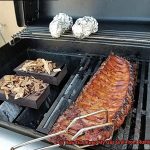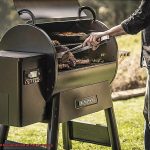There’s nothing quite like the taste of smoky, barbecued or grilled food. It’s a flavor that screams summer and outdoor fun. But, getting that perfect smokiness can be a real challenge. There are so many factors involved in achieving the most smoke flavor from your grill or smoker – from choosing the right wood chips to adjusting temperature and cooking time.
But don’t fret. If you’re a barbecue enthusiast looking to up your flavor game, you’ve come to the right place. In this blog post, we’ll dive into all the tips and techniques you need to get the most smoke flavor out of your grilling experience. Whether you’re a seasoned pitmaster or a novice looking to impress your friends and family with your culinary prowess, we’ve got you covered.
We’ll explore different types of wood chips that work best for specific meats and dishes, and show you how to use them effectively. We’ll also delve into why preheating your grill or smoker is so important, how to control temperature, and manage timing for optimal results. Additionally, we’ll discuss the science behind smoke infusion and how balancing levels of smoke and heat can take your flavor profile up a notch.
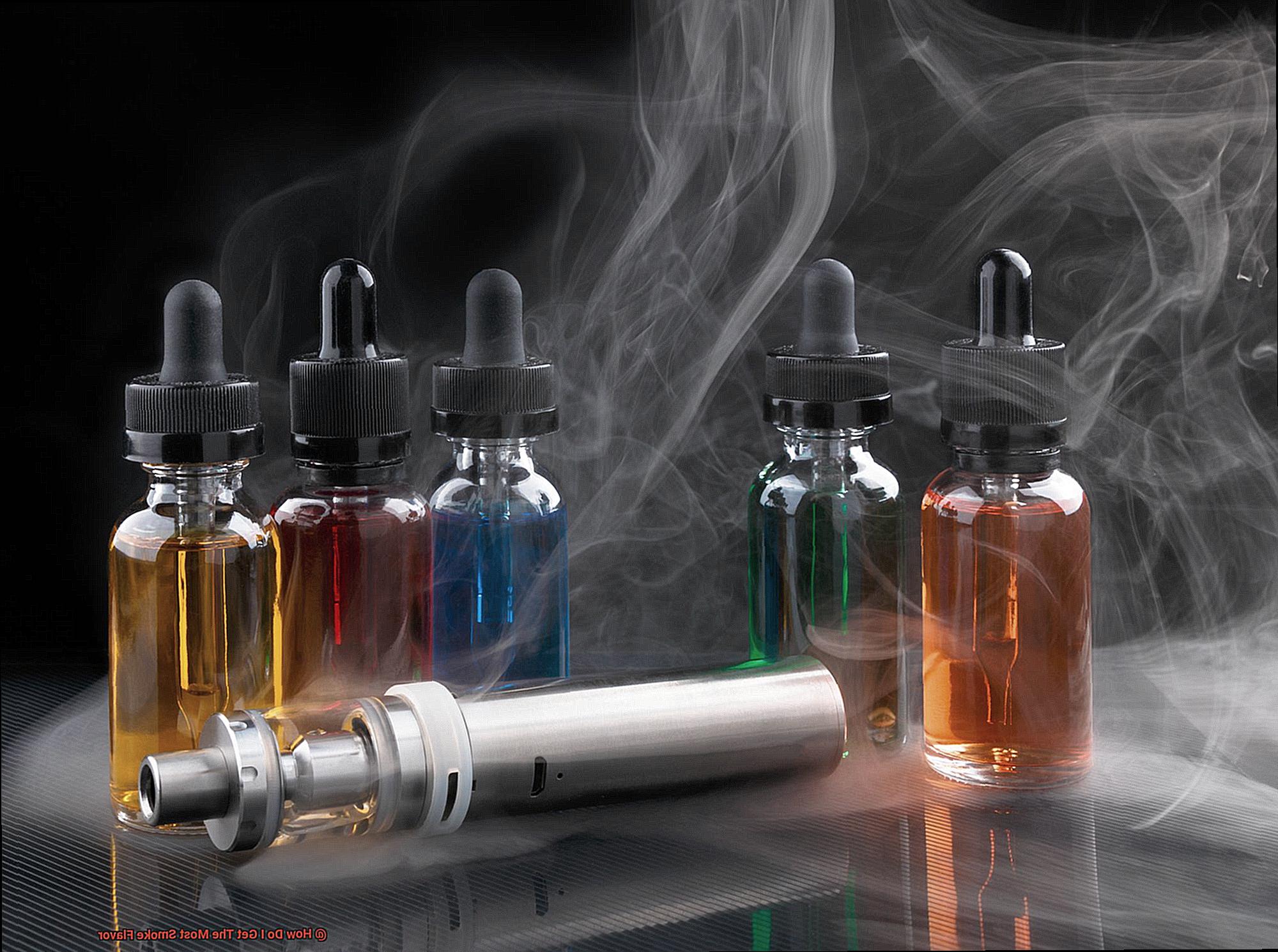
So whether you’re craving juicy ribs or mouthwatering brisket, keep reading to discover how to get the most smoke flavor out of your grill or smoker – it’s time to elevate your barbecue game.
Contents
What is Smoke Flavor?
Smoke flavor is a key component in the world of grilling and barbecuing, setting it apart from other cooking techniques. Smoke flavor is created by the combustion of wood or charcoal, which releases aromatic compounds that infuse food with a distinct smoky flavor. These compounds are what give grilled meat, fish, and vegetables their unique taste and aroma.
To achieve the best smoke flavor, it’s important to consider several factors. The type of wood used for smoking is crucial in determining the flavor intensity. Each type of wood has its own unique flavor profile, so it’s essential to choose a wood that will complement the dish being smoked. Hickory wood produces a strong and bold flavor that pairs well with beef and pork, while applewood provides a sweet and fruity taste that complements poultry and fish.
Maintaining an ideal smoking temperature range is also critical in getting the most smoke flavor. The perfect temperature range is between 225-250°F because it allows for slow cooking while maximizing smoke absorption.
The length of time food is smoked also plays an essential role in achieving maximum smoke flavor. The longer the food is smoked, the more smoke flavor it will absorb. However, it’s crucial to monitor the food to prevent overcooking or becoming too dry.
While natural wood smoke is the preferred method for achieving smoke flavor, there are other sources such as liquid smoke. Liquid smoke is made by burning sawdust and capturing the smoke particles in water. While it can provide a convenient way to add smoke flavor to food, it lacks some of the complex flavors and aromas that come from using natural wood smoke.
What Type of Wood Should I Use?
Look no further than the type of wood you use to add a smoky and irresistible flavor to your dishes. As an expert on the subject, I’ve compiled some essential research notes to help you choose the right wood for your grilling needs.
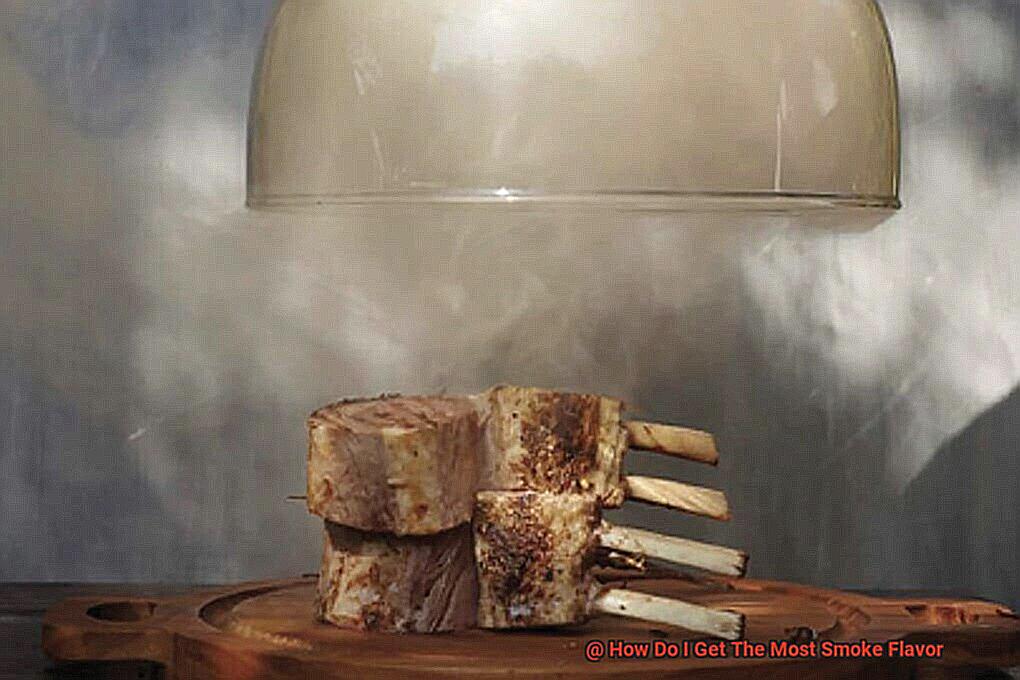
The wood you choose is crucial in achieving the perfect smoke flavor. Different types of wood produce different levels and types of smoke flavor, so it’s important to choose the right one for your dish. Let’s start by addressing what woods to avoid. It’s essential to avoid softwoods like pine or cedar as they contain high levels of resin that can leave a bad taste in your mouth and release harmful chemicals when burned.
Instead, opt for hardwoods like hickory, oak, mesquite, and applewood. Hickory is a classic choice that produces a bold and strong flavor perfect for smoking meats. If you’re looking for something milder but still versatile, oak is a great option. In contrast, mesquite is slightly sweet and smoky, making it a popular choice in southwestern cuisine. And for those who enjoy a fruity smoke flavor, applewood is an ideal choice for poultry and pork.
Another factor to consider is the form of wood you’ll be using. Wood chips and chunks are the most popular options used for smoking on a grill. Still, pellets have gained popularity as they offer a more consistent smoke and are easier to handle.
When deciding on the type of wood to use, it’s essential to consider personal preference and the dish you’re cooking. Whether you’re grilling up some juicy steaks or smoked chicken wings, experimenting with different types of wood can lead to discovering unique and delicious flavors in your dishes.
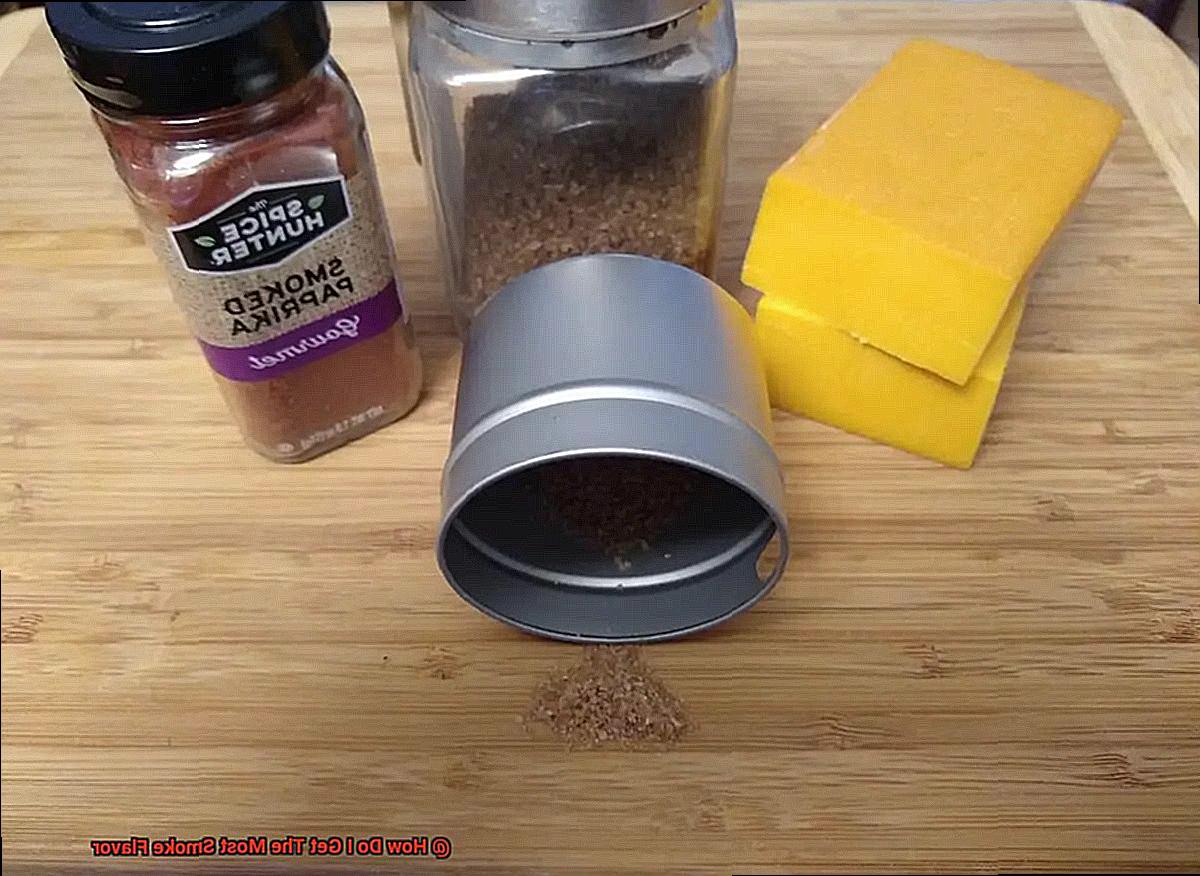
What is the Ideal Smoking Temperature?
If you’re a smoker, then you know that the key to delicious, smoky flavors lies in choosing the right kind of wood for your grill. But did you know that maintaining an ideal smoking temperature is just as important?
To achieve the most smoke flavor, it’s crucial to understand and maintain the ideal smoking temperature range of between 225-250°F. At this temperature range, meat will cook slowly and reach a safe internal temperature while also allowing enough time for the smoke to infuse into the meat.
It’s important to avoid going above this temperature range, as it can cause meat to cook too quickly, leaving little time for smoke penetration. Temperatures above 300°F can also cause wood chips or pellets to burn too quickly, creating a bitter taste that ruins your dish.
Conversely, temperatures below 200°F can cause meat to take too long to cook and become dry and tough. The longer cook time can also allow smoke to escape, resulting in an insufficient amount of smoky flavor.
Another important factor to consider is that different types of meat require different smoking temperatures. For instance, poultry should be smoked at a slightly higher temperature of 275-300°F to ensure that it reaches a safe internal temperature while still obtaining a good amount of smoke flavor.
How Long Should I Smoke My Food?
Smoking is a fantastic way to add depth and complexity to your favorite meats, but getting the timing just right can be tricky. As an expert in this area, I have some tips to help guide you through the process.
First, it’s essential to understand that different types of meat require different smoking times. Larger cuts of meat like brisket or pork butt require more time in the smoker to achieve that fall-off-the-bone tenderness. On the other hand, smaller cuts like ribs or chicken wings may only need a few hours. A general rule of thumb is that larger meats will need anywhere from 12 to 16 hours in the smoker, while smaller cuts may only require 3 to 4 hours.
However, size isn’t the only factor at play. The temperature of your smoker and the type of wood chips you use can also affect how long you should smoke your food. For example, using fruitwood chips such as apple or cherry can produce a milder smoke flavor but may require longer smoking times compared to stronger woods like hickory or mesquite.
It’s crucial to note that over-smoking your food can result in an unpleasant bitter taste, so it’s vital to monitor the smoking process carefully. Use a meat thermometer to check the internal temperature of your food, which should be around 165 degrees Fahrenheit for most meats.
So, how do you find the perfect balance of smoke flavor and tenderness? Experimentation is key. Try out different techniques and take note of what works best for each type of meat. Keep in mind that patience is crucial when smoking food; it’s better to err on the side of caution and smoke for less time than risk over-smoking.
Tips for Getting Maximum Smoke Flavor
Grilling can be a fun and delicious way to cook food, but the perfect smoky flavor can be elusive. To get maximum smoke flavor, you need to consider the type of wood, how long to soak it, the temperature, keeping the lid closed, and using a smoke box. Here are some tips that will help you transform your grilled dishes from good to great:
Use the Right Wood
Choosing the right wood for smoking is essential in getting maximum smoke flavor. Different woods produce different levels of smokiness and flavor intensity. For example, oak wood produces a strong flavor that pairs well with beef, while applewood produces a milder flavor that goes well with chicken or fish.
Soak Your Wood Chips
Soaking your wood chips in water for at least 30 minutes before grilling can help them produce more smoke and last longer. This will ensure that your food has maximum smoke flavor and is not overpowered by bitter flavors.
Control the Temperature
The temperature of your grill is also crucial in getting maximum smoke flavor. Low temperatures between 225-250°F will allow your food to cook slowly and absorb more smoke flavor. Higher temperatures may burn off some of the smoke before it has a chance to infuse into the food.
Keep the Lid Closed
Keeping the lid closed while grilling is one of the most important things you can do to trap in the smoke and infuse it into your food more effectively. Opening the lid too often can release valuable smoke and reduce the overall flavor.
Use a Smoke Box
A smoke box is an excellent tool for getting maximum smoke flavor when using a gas grill. This small metal container holds wood chips and sits directly on top of your grill grates. It allows the wood chips to smoke without catching fire and burning too quickly.
Different Types of Smokers and Their Benefits
Smoking food is an art form that requires a keen eye for detail and the right equipment to achieve the perfect flavor. Choosing the right type of smoker is crucial to getting the most smoke flavor out of your dishes. In this blog post, we’ll explore the different types of smokers and their unique benefits to help you make an informed decision.
Charcoal Smokers
Charcoal smokers are known for producing a strong, smoky flavor that is hard to replicate with any other type of smoker. They use charcoal as their primary fuel source, which can be challenging to use as it requires a lot of attention and upkeep to maintain the desired temperature and smoke levels. However, if you’re looking for an authentic smoky flavor, charcoal smokers are the way to go.
Electric Smokers
Electric smokers are easier to use than charcoal smokers, as they require less attention and can be set to maintain a consistent temperature and smoke level. They come equipped with digital controls and timers that allow you to set it and forget it, making them ideal for beginners or those who prefer convenience over authenticity. However, electric smokers may not produce as strong of a smoke flavor as charcoal smokers.
Propane Smokers
Propane smokers use propane gas as their fuel source and are easy to use and maintain. They can also produce a strong smoke flavor, but may not be as authentic as charcoal or wood-fired smokers. Propane smokers come with digital controls that allow you to adjust the temperature and smoke level, making them ideal for those who want convenience without sacrificing flavor.
Wood-Fired Smokers
Wood-fired smokers are often considered the most authentic type of smoker and can produce a very strong smoke flavor. They use wood as their fuel source, which requires a lot of attention to maintain temperature and smoke levels. However, if you’re willing to put in the time and effort, wood-fired smokers offer a unique smoky flavor that is hard to replicate.
Offset Smokers
Offset smokers use wood or charcoal to create smoke and heat in a separate firebox before circulating it into the main cooking chamber. This allows for consistent temperature and even cooking while also providing a rich smoky flavor. Offset smokers are ideal for those who want to achieve a unique, smoky flavor without the hassle of maintaining temperature and smoke levels.
Pellet Smokers
Pellet smokers use small wood pellets that are fed into a hopper and automatically ignited by an electric starter. This allows for precise temperature control and consistent smoke production, resulting in flavorful and evenly cooked meats. Pellet smokers are ideal for those who want convenience without sacrificing flavor.
The Benefits of Smoking Food
This ancient cooking method has been around for centuries and for good reason. Smoking involves exposing food to smoke from burning wood, which gives it a unique and delicious flavor. But smoking isn’t just about taste – there are several benefits to this cooking method that make it worth considering.
First, smoking is a natural preservative that can extend the shelf life of food. By preventing the growth of harmful bacteria, smoking can preserve meats and fish for several days or even weeks. This is particularly useful for those who want to reduce food waste or enjoy outdoor activities like camping, where refrigeration isn’t always available.
But preservation is just one of the many benefits of smoking food. It can also help to tenderize tough cuts of meat, resulting in a more succulent and flavorful finished product. As the collagen and connective tissue in the meat break down during smoking, it becomes more tender, juicy, and easier to chew. This is why smoking is often used for brisket, ribs, and other meats that require long cooking times.
Smoking food is also a healthier cooking option compared to other methods like frying or grilling. Direct contact with flames or high heat can create harmful compounds like PAHs and HCAs that have been linked to an increased risk of cancer. Smoking allows excess fat to drip away from the food, resulting in a leaner finished product that’s lower in calories and saturated fat.
Common Mistakes to Avoid When Smoking Food
Smoking food is a culinary technique that has been used for centuries to enhance the flavor of meat, fish, and vegetables. However, even experienced smokers can make common mistakes that can ruin the flavor of their food. To help you avoid these pitfalls and achieve the perfect smoked dish every time, here are some expert tips.
Firstly, preparing your meat correctly is crucial to achieving the best flavor. It’s essential to remove any excess fat or skin from the meat before smoking, as this can cause flare-ups and uneven cooking. Marinating your meat beforehand can also help infuse it with flavor and make it more tender. By taking these simple steps, you’ll ensure that your food is moist and flavorful.
Secondly, using enough wood chips or chunks is key to creating that smoky flavor we all love. The smoke from the wood is what gives your food its unique taste, so don’t skimp on it. However, too much smoke can make your food bitter and unpleasant, so it’s important to find the right balance. Remember, it’s better to err on the side of caution and use less wood than too much.
Temperature control is another critical factor in smoking food. Maintaining the right temperature throughout the smoking process is essential to achieving that perfect smoky flavor. If the temperature is too high, your food can cook too quickly and not have enough time to absorb the smoke flavor. Conversely, if the temperature is too low, your food can take too long to cook and become dry. Keep a close eye on your smoker and adjust the temperature as needed.
Finally, allowing enough time for your smoked food to rest is crucial for its flavor and texture. When you take your food out of the smoker, let it rest for at least 15 minutes before cutting into it. This will allow the juices to redistribute throughout the meat, resulting in a more tender and flavorful final product.
XoBT8C1UKtQ” >
Conclusion
In conclusion, the quest for the perfect smoky flavor may seem daunting, but with the right techniques and equipment at your disposal, you can elevate your grilling game to new heights. The key to achieving maximum smoke flavor lies in selecting the right wood chips, maintaining an optimal smoking temperature range, and adjusting cooking time as needed.
When it comes to choosing wood chips, personal preference and the dish being cooked should be taken into consideration. Different types of wood offer unique flavors that can enhance or overpower certain dishes. Experimentation is key to finding the perfect match for your taste buds.
It’s also important to note that different types of smokers offer varying levels of smoky flavor. Whether you prefer charcoal, electric, propane, wood-fired, offset or pellet smokers, each has its own advantages depending on your needs and preferences.
Smoking food not only adds delicious flavor but also offers several health benefits such as natural preservation and tenderization without adding harmful compounds like PAHs and HCAs that come from other cooking methods. However, it’s crucial to avoid common mistakes such as not preparing meat correctly or using too much smoke.
By following these tips and techniques for getting the most smoke flavor out of your grill or smoker, you’ll be able to create mouthwatering dishes that will impress your friends and family all summer long.


